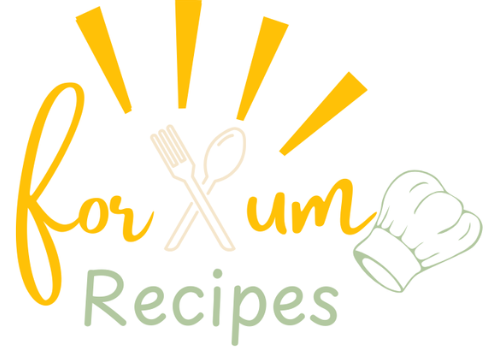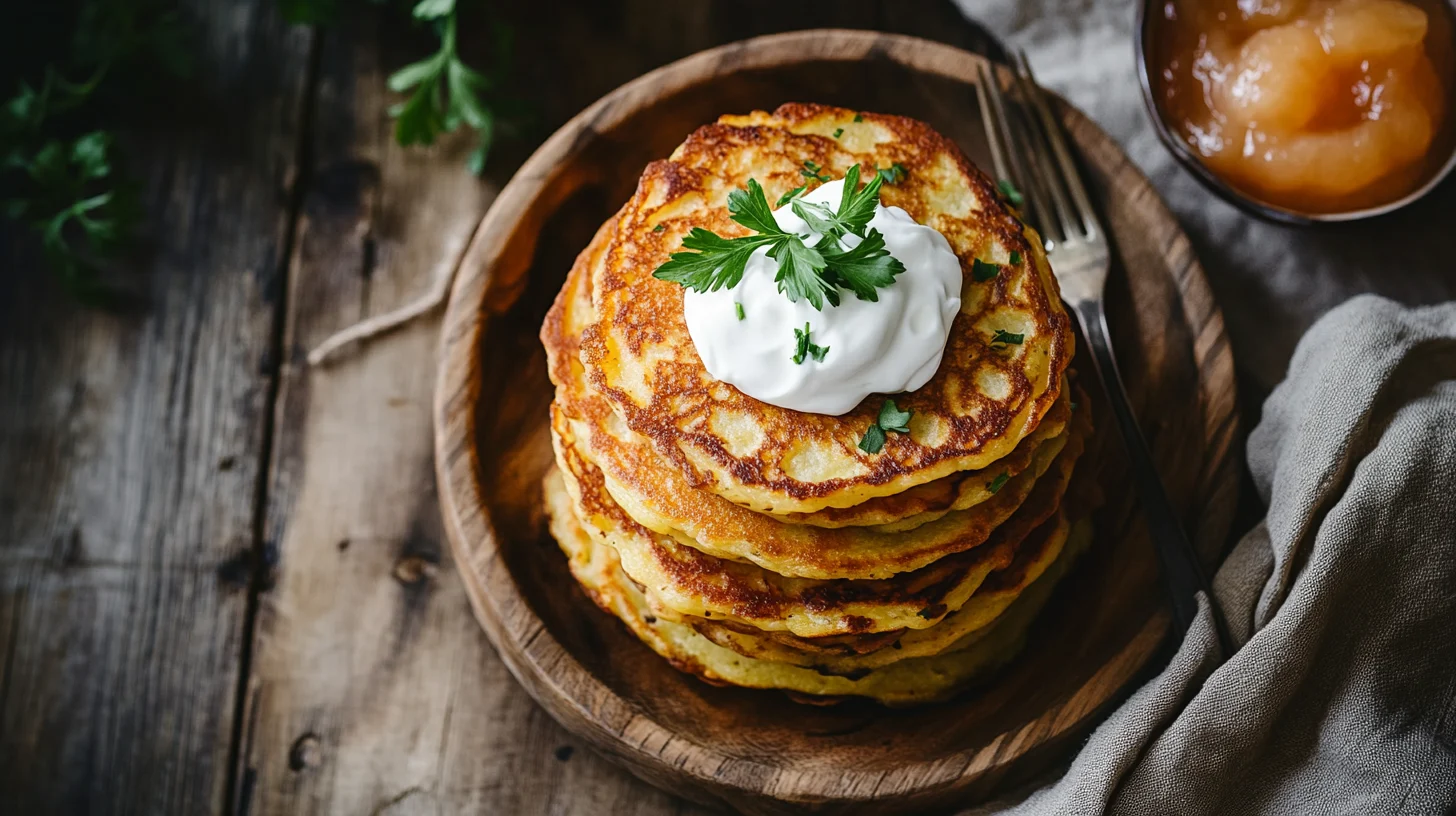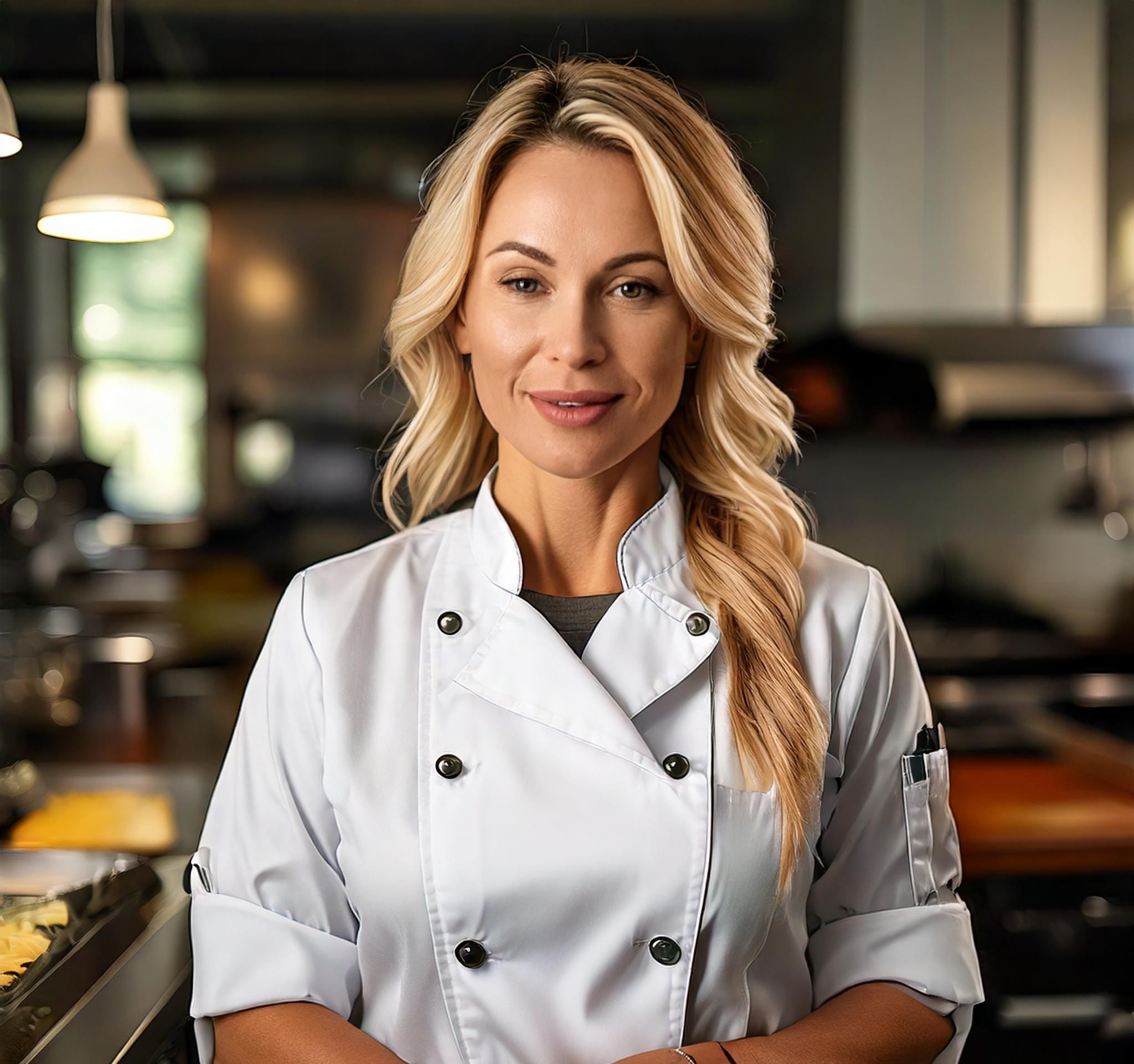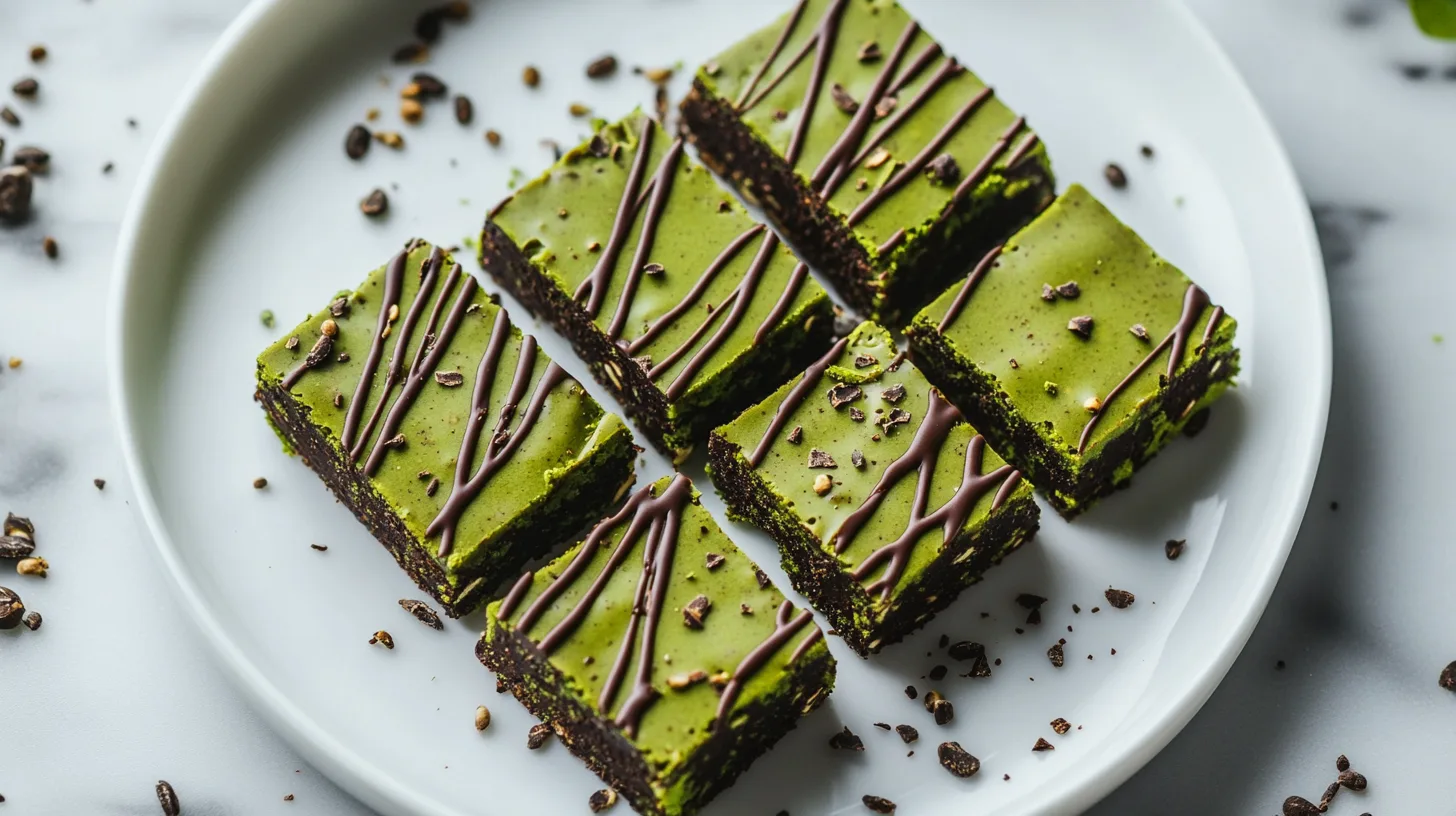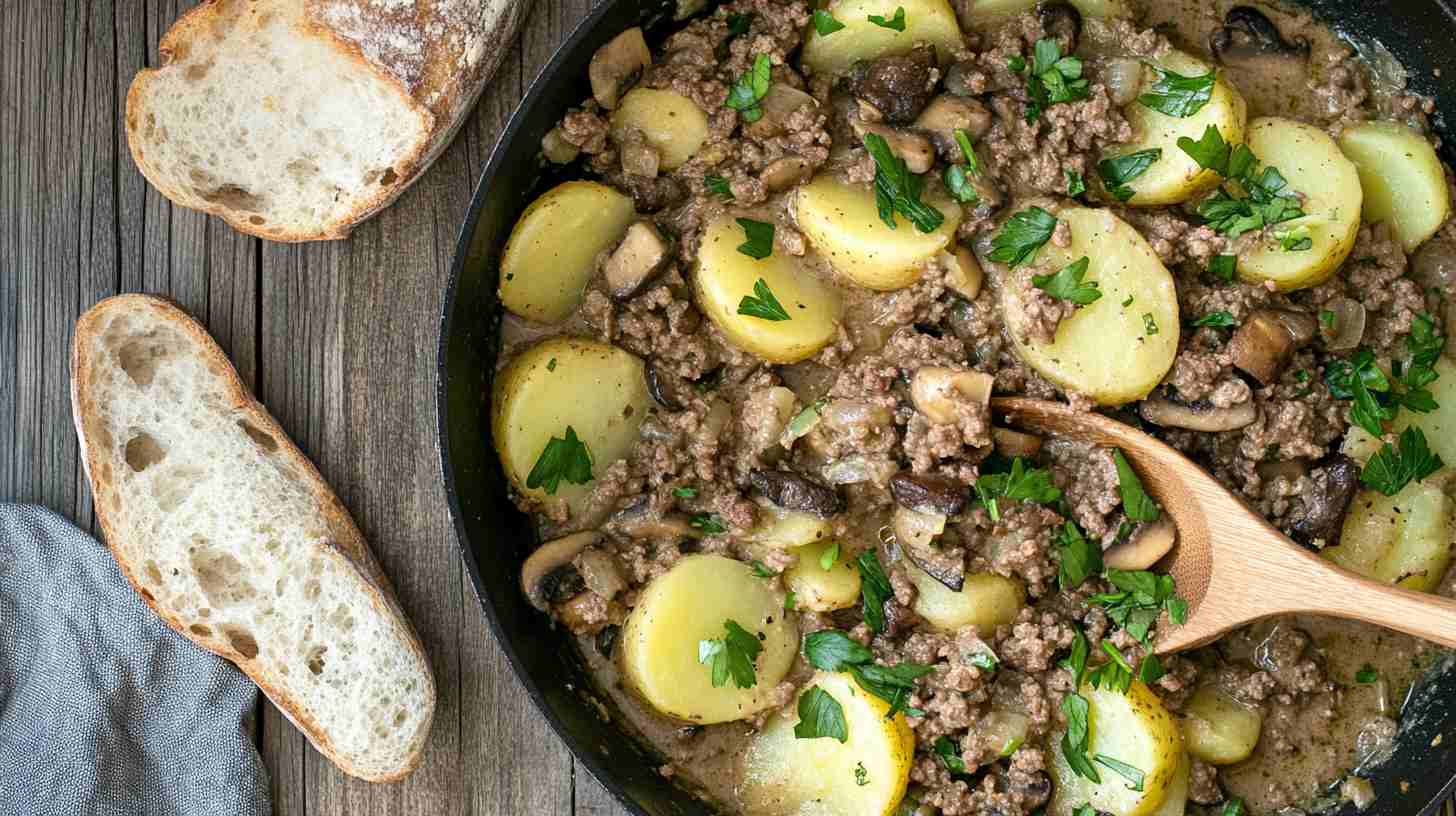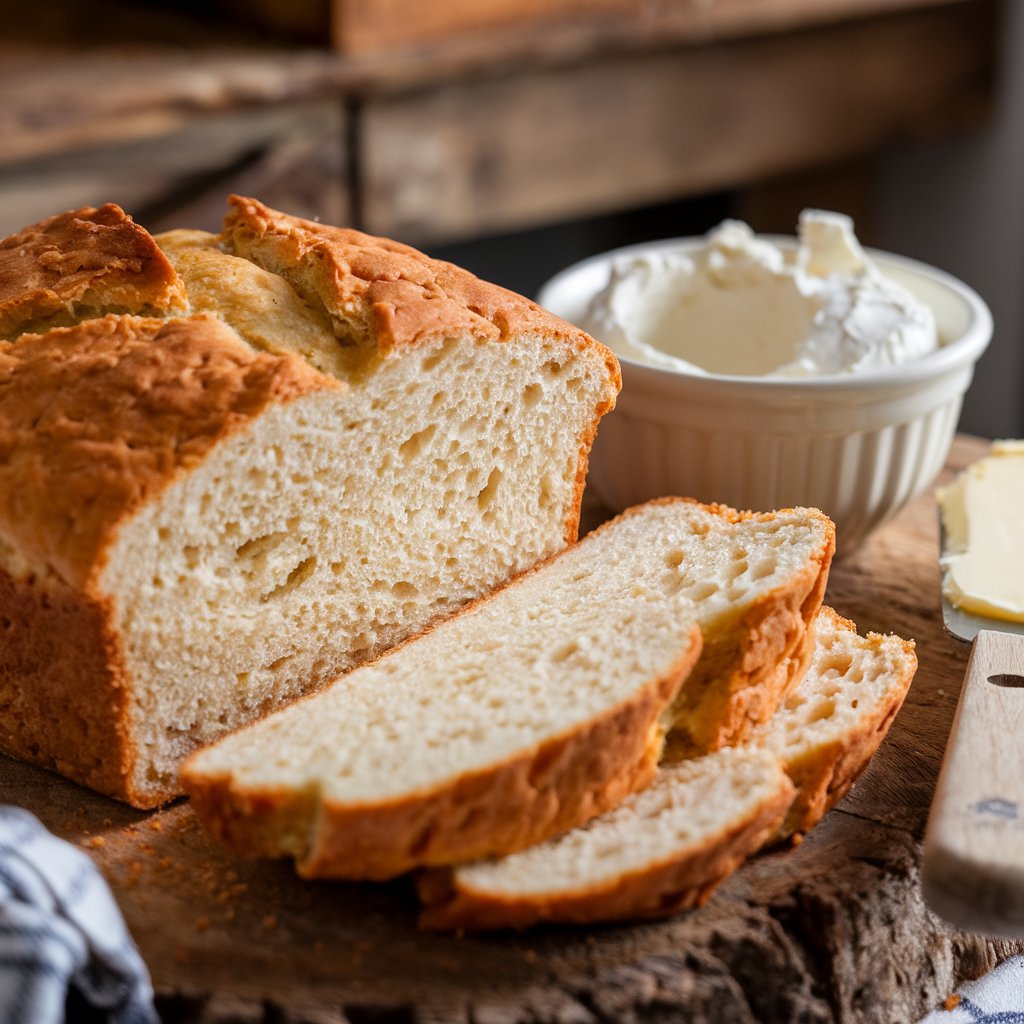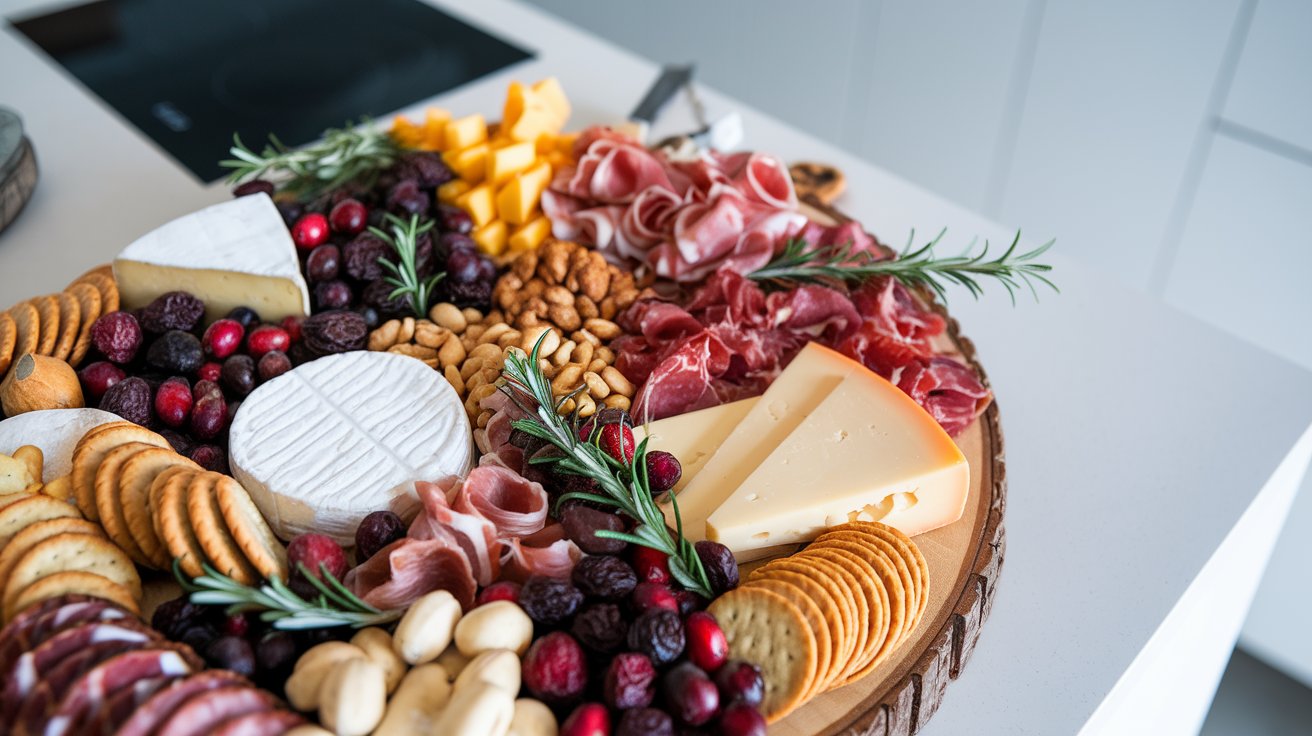Potato pancakes, also known as latkes, are a timeless dish that has captured the hearts (and appetites) of people across the globe. Whether it’s a festive holiday meal, a cozy family brunch, or a quick snack to satisfy cravings, these golden pancakes fit any occasion. For those avoiding gluten, however, traditional recipes may seem off-limits. But don’t worry—this gluten-free potato pancakes recipe ensures you can enjoy all the crunch and flavor without compromising your dietary needs.
In this recipe, we’ll show you how to create perfectly crispy potato pancakes that are simple to prepare and adaptable to various lifestyles, including Paleo, Whole30, and even vegan diets. These pancakes make a delightful addition to breakfast, lunch, or dinner, and they’re so versatile that you can customize them to suit your personal tastes.
If you’re new to gluten-free cooking, this recipe is a great starting point. Plus, for extra tips on how to get started, take a moment to read Tips for Gluten-Free Baking. Now, let’s jump right into why this recipe deserves a spot in your kitchen.
Why Choose a Gluten-Free Potato Pancakes Recipe?
First and foremost, adapting this classic recipe to be gluten-free allows more people to enjoy a beloved dish. Whether you have a gluten intolerance, follow a specific dietary plan, or simply enjoy experimenting in the kitchen, these pancakes offer something for everyone.
Another reason to choose this recipe is its light, crispy texture. Gluten-free flours, such as almond or tapioca flour, help create a golden crust while maintaining a soft, flavorful center. Furthermore, this recipe provides a level of flexibility that works for all kinds of diets. Whether you’re looking for Whole30 or Paleo options, or need a vegan-friendly recipe, it’s easy to make adjustments without sacrificing flavor or texture.
Finally, this dish isn’t just delicious—it’s practical. These pancakes are perfect for busy weekday meals, holiday celebrations, or even as an on-the-go snack. With such wide appeal, this recipe is bound to become a staple in your kitchen.
Key Ingredients and Substitutions
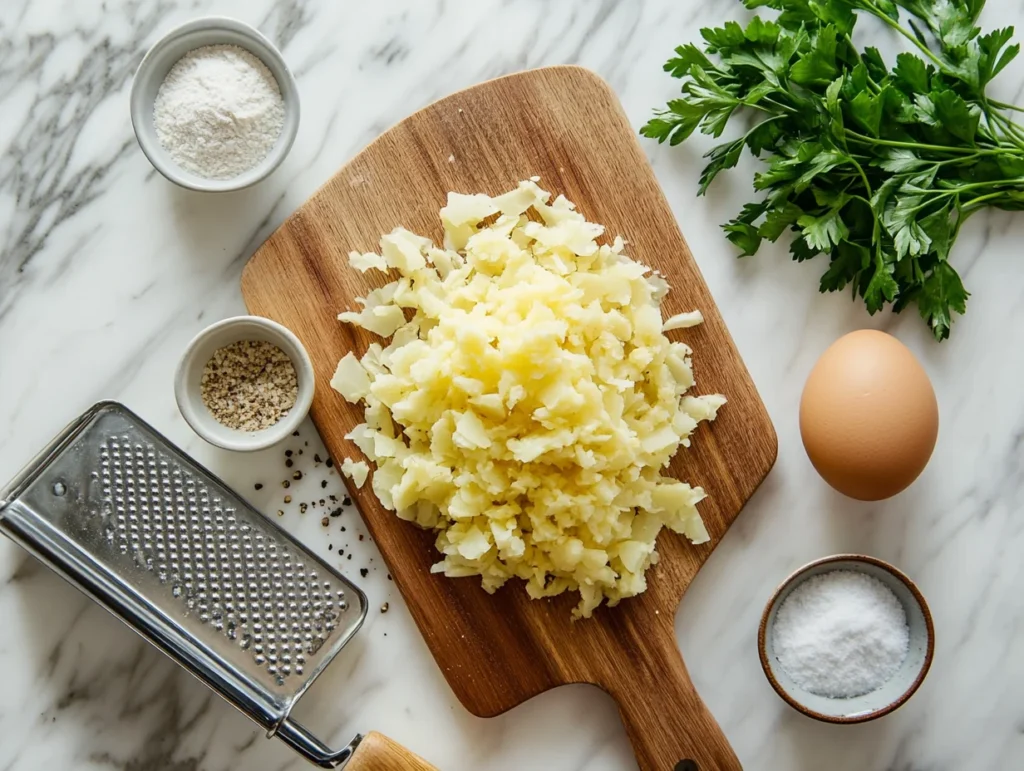
Core Ingredients
To start, let’s talk about the essentials that make these pancakes so tasty and unique. At the heart of this recipe are:
- Russet Potatoes: These starchy potatoes are ideal for creating that fluffy yet crispy texture you’re aiming for. Their high starch content ensures the batter binds well.
- Onion: Grated onion adds a subtle sweetness and depth of flavor to the pancakes. You can use yellow, brown, or even green onions for variety.
- Eggs: Eggs act as a crucial binder, helping the batter hold together. If you’re making vegan pancakes, we’ll cover substitutions in a moment.
- Gluten-Free Flour: Choose from almond flour for a rich, nutty flavor, or tapioca flour for a lighter texture. Both options work beautifully to replace traditional wheat flour.
- Seasonings: Don’t forget salt, pepper, and garlic powder to elevate the flavors of your pancakes.
Ingredient Substitutions
Of course, not everyone has the same ingredients in their pantry or the same dietary preferences. Luckily, this recipe is incredibly flexible:
- For a vegan option, replace each egg with a flaxseed or chia seed gel (1 tablespoon seeds mixed with 2.5 tablespoons water per egg).
- Need to avoid dairy? Try cashew sour cream, coconut yogurt, or even avocado crema as toppings.
- Looking for alternative flours? Arrowroot powder, potato starch, or rice flour can also do the job.
Optional Additions
For an extra pop of flavor, consider adding fresh herbs like parsley or dill. You can also spice things up with paprika or cumin for a smoky twist. Want a cheesy kick? Incorporate some grated dairy-free cheese into the batter.
Step-by-Step Instructions
1. Preparing the Potatoes
First, peel your Russet potatoes and grate them using a box grater or food processor. Once grated, transfer them to a clean kitchen towel and squeeze out as much liquid as possible. This step is crucial because removing the moisture ensures your pancakes turn out crispy, not soggy.
Additionally, don’t throw out the starchy liquid just yet. Let it sit for a minute, and you’ll notice that potato starch settles at the bottom. Carefully pour off the liquid and add the starch back to your batter—it’s a natural thickener that enhances crispiness.
2. Mixing the Batter
In a large mixing bowl, combine the grated potatoes, onion, eggs (or substitutes), gluten-free flour, and seasonings. Mix everything thoroughly until the ingredients are evenly distributed. The batter should be slightly sticky and thick enough to form into patties. If it feels too wet, sprinkle in a bit more flour until the consistency is right.
To test your batter, form a small patty in your hand. If it holds its shape and doesn’t crumble, you’re good to go!
3. Frying the Pancakes
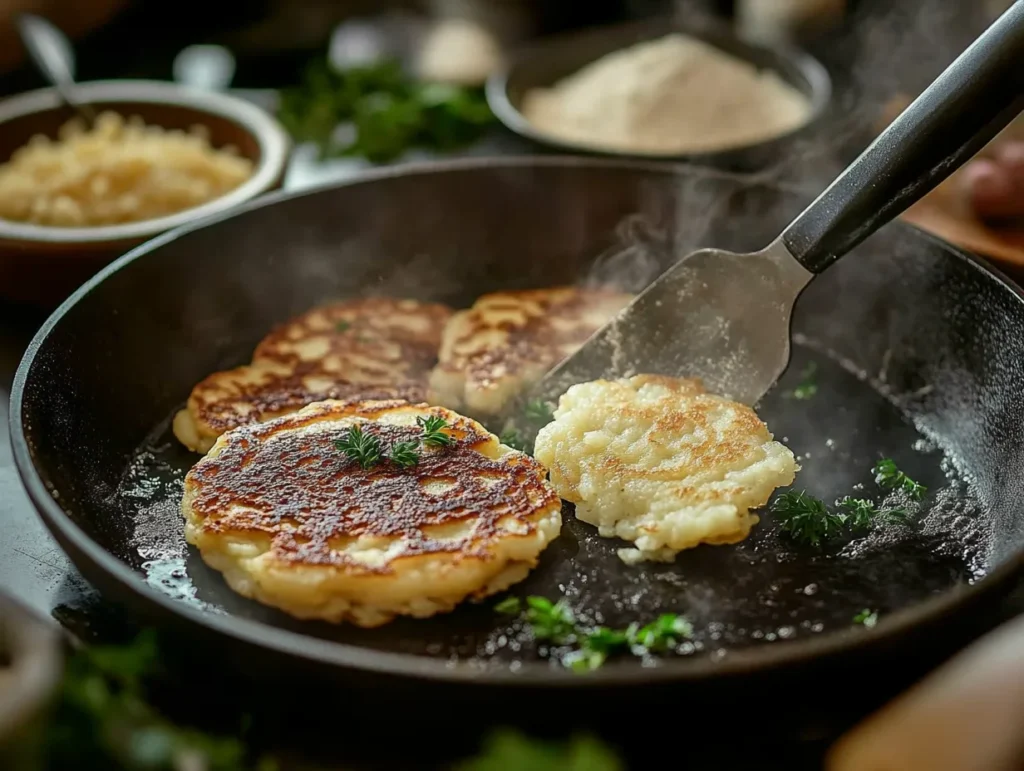
Now, heat a generous amount of oil in a heavy-bottomed skillet over medium heat. Avocado oil is a great choice because of its high smoke point and neutral flavor. Once the oil is hot, spoon a small amount of batter into the pan and flatten it gently with the back of your spoon.
Fry each pancake for about 3-4 minutes on each side, or until golden brown and crispy. Use a slotted spatula to transfer the cooked pancakes to a plate lined with paper towels. This helps absorb any excess oil.
For best results, fry the pancakes in small batches, giving each one enough space to cook evenly.
4. Oven-Baked Option
If you prefer a healthier alternative, preheat your oven to 425°F (220°C). Line a baking sheet with parchment paper and lightly grease it. Scoop the batter onto the sheet, flattening each portion into a pancake shape. Bake for 15-20 minutes, flipping halfway through, until the pancakes are golden and crispy.
Pro Tips for Perfect Gluten-Free Potato Pancakes
Getting the perfect potato pancakes requires a few key techniques. First, always squeeze out as much liquid as possible from the grated potatoes. Moisture is the enemy of crispiness.
Next, don’t overcrowd your pan when frying. Each pancake needs enough space to cook evenly. Similarly, using high-quality oil with a neutral flavor ensures the pancakes fry without becoming greasy.
Finally, for an extra crispy finish, layer cooked pancakes between sheets of paper towels as they cool. This helps absorb any lingering oil while keeping the edges crunchy.
Serving Suggestions
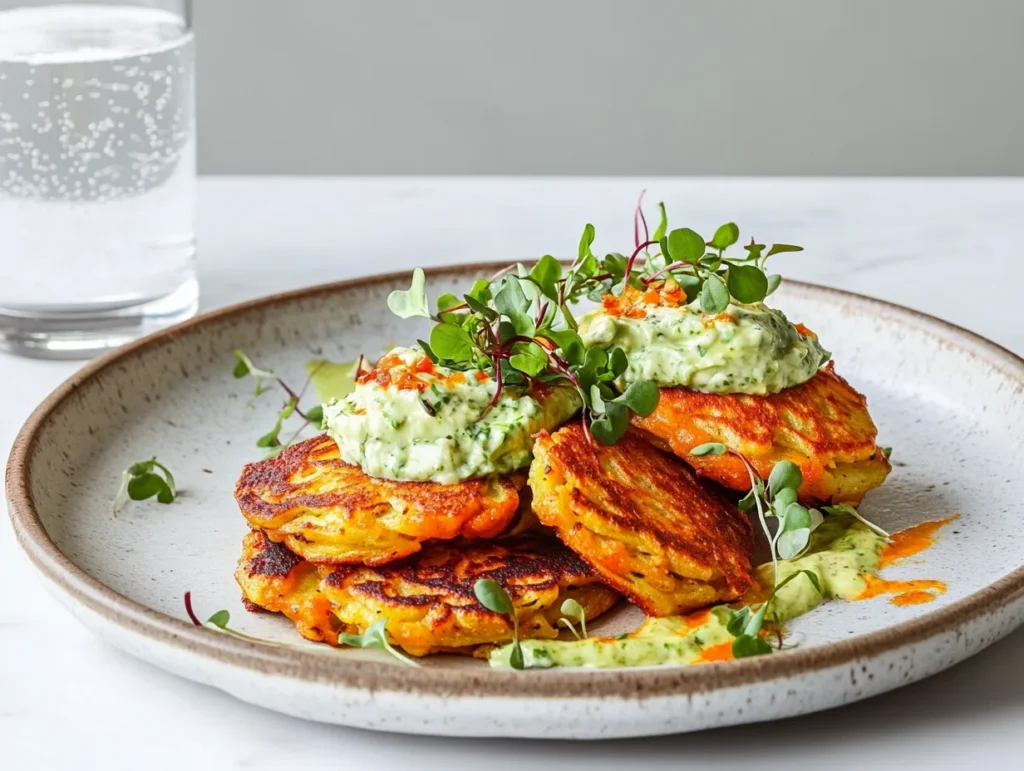
Potato pancakes are incredibly versatile, making them a fantastic addition to any meal. Traditionally, they’re paired with applesauce or sour cream, but the options don’t stop there.
For a modern twist, try serving them with spicy aioli, tangy tzatziki, or a dollop of guacamole. If you’re making these pancakes as part of a meal, consider pairing them with smoked salmon, roasted vegetables, or a fresh green salad.
How to Store and Reheat Potato Pancakes
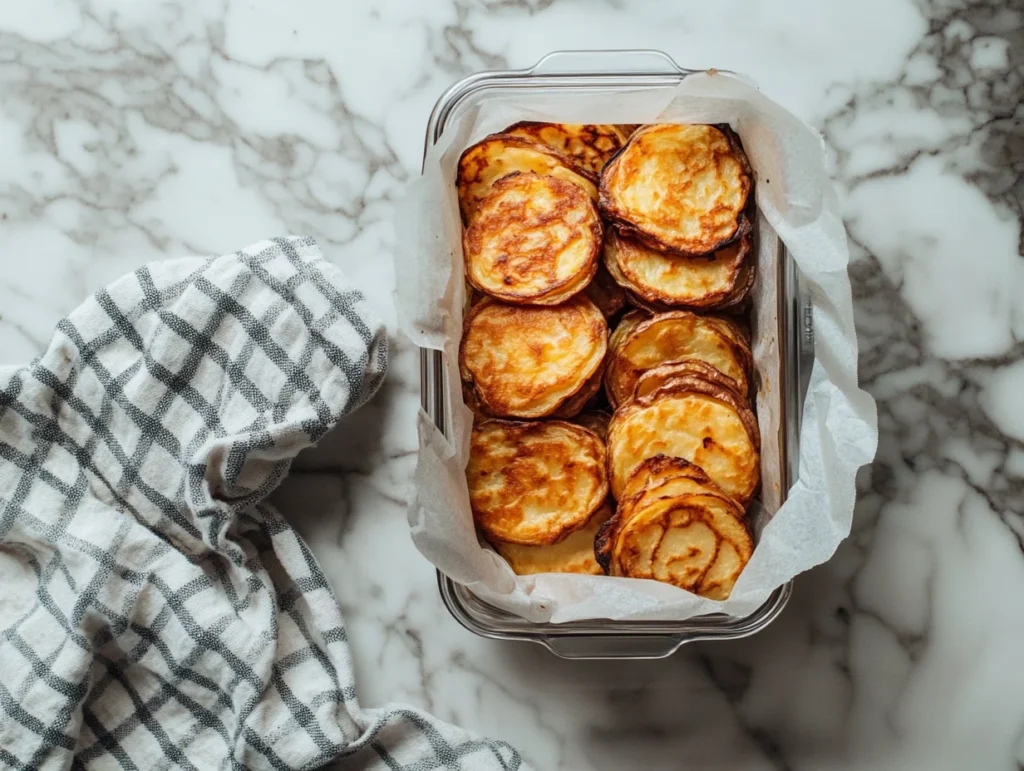
Proper storage is essential for enjoying leftover pancakes without losing their delicious texture. After they’ve cooled, stack the pancakes in an airtight container with parchment paper between each layer.
When you’re ready to eat, reheat the pancakes in a 375°F (190°C) oven for 10-15 minutes. This restores their crispy edges without drying them out. Avoid microwaving, as it tends to make the pancakes soggy.
Dietary Variations
This recipe can be tailored to meet various dietary needs:
- Paleo or Whole30: Swap out gluten-free flour for cassava flour and fry in ghee or coconut oil.
- Vegan: Use chia or flaxseed eggs, and serve with dairy-free dips like cashew sour cream.
- Low-Carb: Reduce the amount of potato and mix in grated zucchini or cauliflower for a lighter option.
Troubleshooting Common Problems
Sometimes, even the best cooks encounter challenges. If your pancakes fall apart, it’s likely because the batter lacks sufficient binder. Adding an extra egg or more flour should fix the issue.
If your pancakes are too greasy, the oil may not be hot enough. Always preheat the pan and test the oil with a small drop of batter before frying.
For uneven cooking, make sure the pancakes are an even thickness and fry them in batches.
Nutritional Information
Each serving of these gluten-free potato pancakes contains approximately:
- Calories: 195
- Carbohydrates: 37g
- Protein: 7g
- Fat: 3g
- Fiber: 4g
Additional Tips for Making Gluten-Free Pancakes
Always opt for fresh, high-quality ingredients. Fresh potatoes and onions make a significant difference in flavor and texture. Don’t be afraid to get creative with seasonings or experiment with toppings.
For more gluten-free ideas, visit Quick and Easy Gluten-Free Side Dishes.
FAQs About Gluten-Free Potato Pancakes
1. Do potato pancakes contain gluten?
It depends on the recipe. Traditional potato pancakes often use all-purpose wheat flour as a binder, which contains gluten. However, gluten-free potato pancakes replace wheat flour with alternatives like almond flour, tapioca flour, or rice flour, making them safe for those with gluten sensitivities or Celiac disease. Always check the recipe ingredients or ask when dining out, as some versions may still include gluten-containing flours.
2. What is a gluten-free potato substitute?
For gluten-free recipes, potatoes themselves are naturally gluten-free, so no substitution is needed unless you’re following a low-carb diet. If you are avoiding potatoes, options like cauliflower, sweet potatoes, or zucchini can work beautifully in recipes like pancakes. For example, grated zucchini mixed with almond flour and eggs creates a delicious gluten-free alternative that mimics the texture of potato pancakes. Furthermore, these substitutes bring additional nutrients to your meal, adding variety to your diet.
3. What is the difference between potato pancakes and latkes?
While the two terms are often used interchangeably, there are subtle differences. Potato pancakes are a broader category, often made with finely grated potatoes and mixed with flour and eggs. Latkes, a traditional dish in Jewish cuisine, usually have a coarser texture with shredded potatoes and are frequently served during Hanukkah. In addition, latkes often incorporate onions and are fried in oil, symbolizing the holiday’s historic miracle of the oil lamp. Despite their differences, both can be made gluten-free with the right flour substitutes.
4. What activates gluten in pancakes?
Gluten in traditional pancakes is activated when wheat flour is mixed with water or other liquids, creating a stretchy network of proteins. This activation happens during the mixing process as the proteins in the flour, glutenin, and gliadin combine to form gluten.
Conclusion
In the end, this gluten-free potato pancakes recipe is a game-changer. It’s a dish that bridges tradition and innovation, satisfying both dietary restrictions and taste buds. With its crispy edges, fluffy centers, and endless adaptability, these pancakes are perfect for every occasion.
So, grab your ingredients, whip up a batch, and let the magic happen. And remember, cooking isn’t just about the food—it’s about the moments and memories you create along the way.
Please don’t forget to leave a review.
